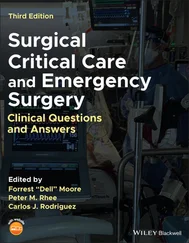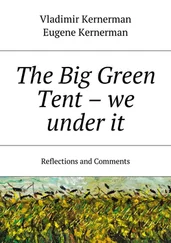Herbert Tiedemann - Babi Yar - Critical Questions and Comments
Здесь есть возможность читать онлайн «Herbert Tiedemann - Babi Yar - Critical Questions and Comments» весь текст электронной книги совершенно бесплатно (целиком полную версию без сокращений). В некоторых случаях можно слушать аудио, скачать через торрент в формате fb2 и присутствует краткое содержание. Жанр: История, на английском языке. Описание произведения, (предисловие) а так же отзывы посетителей доступны на портале библиотеки ЛибКат.
- Название:Babi Yar: Critical Questions and Comments
- Автор:
- Жанр:
- Год:неизвестен
- ISBN:нет данных
- Рейтинг книги:4 / 5. Голосов: 1
-
Избранное:Добавить в избранное
- Отзывы:
-
Ваша оценка:
- 80
- 1
- 2
- 3
- 4
- 5
Babi Yar: Critical Questions and Comments: краткое содержание, описание и аннотация
Предлагаем к чтению аннотацию, описание, краткое содержание или предисловие (зависит от того, что написал сам автор книги «Babi Yar: Critical Questions and Comments»). Если вы не нашли необходимую информацию о книге — напишите в комментариях, мы постараемся отыскать её.
Babi Yar: Critical Questions and Comments — читать онлайн бесплатно полную книгу (весь текст) целиком
Ниже представлен текст книги, разбитый по страницам. Система сохранения места последней прочитанной страницы, позволяет с удобством читать онлайн бесплатно книгу «Babi Yar: Critical Questions and Comments», без необходимости каждый раз заново искать на чём Вы остановились. Поставьте закладку, и сможете в любой момент перейти на страницу, на которой закончили чтение.
Интервал:
Закладка:
HERBERT TIEDEMANN
Babi Yar: Critical Questions and Comments
1. Preamble
"Courage means seeking the truth and proclaiming it!"
Jean JaurésThe subject of 'Babi Yar' is confusing in many respects. For a general overview, this brief summary shall therefore identify the major problem areas:
1. The mass murder at Babi Yar took place almost four months prior to the Wannsee Conference, where the killing was allegedly first planned.
2. Widely divergent dates are given for the murder.
3. Depending on the source, the number of victims varies by as much as two orders of magnitude.
4. Widely different methods and weapons are alleged for the murders.
5. There is also no consensus on where the killings took place.
6. The witnesses, or reports respectively, make highly contradictory claims in other respects as well.
7. The number of alleged victims by far exceeds the number of Jews remaining in Kyiv after the Soviet evacuation.
8. To date there has been no forensic investigation of the murder site and weapons. No attempts were ever made to ascertain and secure any evidence.
9. It is also odd that the Soviets would use a site as a location for a garbage dump and incineration area where countless victims were allegedly murdered by the archenemy during the 'Great Patriotic War'.
10. And finally, the allegations are disproved by wartime air photos.
We shall employ standard scientific methodology to examine the issues briefly touched on above. Following some introductory information for a better general understanding of the topic, individual sections will present the first reports, eyewitness accounts, and other sources, and will discuss specific questions that arise in context. A separate section is devoted to general questions.[1]
2. By Way of an Introduction
The taking of Kyiv by the Germans on September 19, 1941, by no means heralded the end of unrest for this city. Kyiv had hardly been occupied when "tremendous explosions occurred one after another."[2] On September 24, the Hotel Continental was blown up, along with the Headquarters of the rear area of the 6th Army. On September 25 a conflagration of the downtown area of Kyiv, Khreshchatyk, continued to spread. Mines had destroyed almost all public buildings - after the German troops had moved in, and many died. By the end of September a Soviet map for setting of delayed action mines had been found which showed about 50 objects readied for radio detonation. In addition, an enormous quantity of mines, explosives and 'Molotov Cocktails' had also been discovered. Most of the city center had burned down and some 50,000 persons were homeless. Hundreds of German soldiers had been killed fighting the fires. Many organized saboteurs and partisans were left behind in the city abandoned by the Soviets; Kyiv was still a battlefield.
According to a document of a rather suspicious origin presented at the International Military Tribunal (IMT), all Jews were allegedly arrested and 33,771 of them were executed on September 29 and 30 in retaliation for the 'arson'.[3]
Prior to the evacuation, about 175,000[4] but possibly as few as 160,000[5] Jews lived in Kyiv. Yet Einsatzgruppen Event Report No. 106 of October 7, 1941, claims:
"The number of Jews allegedly amounts to 300,000 [...]."[6]
The Jews were allegedly instructed, by means of a poster,[7] to bring their possessions and gather at a street corner on September 29, 1941. From there, it is said, they would be marched to Babi Yar at the northwestern outskirts of Kyiv.
'Babi Yar' translates roughly as 'Ravine of Old Women'. It is not, however, a ravine, but rather a branching system of erosion channels, from 30 ft. to about 3,000 ft. across and from zero to about 150 ft. depths at the wider sections of the larger western gorges.
The eastern part of this erosion feature was about 1,300 ft. in length and a maximum of 30 ft. in width and extended from the north approaching the Jewish Cemetery lying on it's eastern side to about 200 ft. This Cemetery measured roughly 1,300 ft. Ч 1,000 ft. The broader branch of this erosion feature is located about 1/4 mile farther to the west. To the south of the Jewish Cemetery is Melnikowa Street, and to the southeast there is a large military camp that already shows up on air photos dating from May 17, 1939.[8] Not the erosion gully next to the Jewish Cemetery, but the entire extensively fissured area was called Babi Yar. On September 29 and 30, 1941, it is said, countless victims - most of them Jews - were murdered there. But also in this case, no one ever took the trouble of confirming the various allegations and witness statements by means of detailed forensic investigations. An objective analysis is thus required.
3. Initial Reports
1. On October 21, 1941, the London office of the Jewish Telegraphic Agency (JTA) reported that the pro-NS Ukrainian newspaper Krakiwski Wisti, published in Krakow, had written
"[...] that soon after the occupation of the city [Kyiv], all Jews, including men, women and children of all ages, were taken from their homes and driven into barbed-wire enclosures located at the outskirts of Kyiv. From there they were driven by foot to an undisclosed destination."[9]
• Some 160,000 to 170,000 Jews, but according to Einsatzgruppen Event Report 106 as many as 300,000 Jews, lived in Kyiv at the start of the war. The orderly gathering and transfer of such great numbers of people would have been noticed by countless witnesses, all of whom would have attested to a 'mass migration' of people with their possessions. Why are there no such witnesses?
• The report mentions neither a date nor a place. It is claimed that the Jews were driven on foot from barbed-wire enclosures to an unknown destination, but not that they were murdered "at the outskirts of Kyiv".
• During March 1996 major Ukrainian newspapers reported that Ukrainian American historians determined that the Jews were deported from Babi Yar via the nearby military railroad station to Minsk. During the stay behind barbed wired enclosures, Germans allegedly extracted from the Jews the customary war tax in valuables.[10]
2. On November 13 the secret broadcasting station of the Polish Underground in Lvov (Lemberg) issued another report,[11] which was passed on through Warsaw and was received and deciphered in London on November 17 via 819 Selim, a secret Polish receiving station in Istanbul:[12]
"Germans and Ukrainians are slaughtering Jews by the thousands: in Kyiv 35,000 [have been] shot, about 3,000 small children were murdered with clubs by Ukrainians [...]"
• The tale of the clubbing murders was not publicized by the Polish government-in-exile.
• How could the Jews be shot in Kyiv if, according to 1., they had been driven off to an unknown destination?
• Why is no place or date given despite the importance of the message?
3. On November 16, 1941, the JTA then offered the following cryptic message:[13]
"Somewhere in Europe [...] from an unimpeachable source that 52,000 men, women and children [...] were mercilessly and systematically executed [...] in accordance with the cold-blooded Nazi policy of extermination [...]."
• This hair-raising news flash was squeezed in among rather trivial reports. And this despite the fact that it could have prompted an international outcry?
• Why, again, are the place and date, as well as further details, not given?
• Was the Jewish Telegraphic Agency aware of the "cold-blooded Nazi policy of extermination" even before the 'Nazi' authorities themselves, who were responsible for the Final Solution and who were not even superficially briefed on the matter until January 20, 1942, at the 'Wannsee Conference'?
Читать дальшеИнтервал:
Закладка:
Похожие книги на «Babi Yar: Critical Questions and Comments»
Представляем Вашему вниманию похожие книги на «Babi Yar: Critical Questions and Comments» списком для выбора. Мы отобрали схожую по названию и смыслу литературу в надежде предоставить читателям больше вариантов отыскать новые, интересные, ещё непрочитанные произведения.
Обсуждение, отзывы о книге «Babi Yar: Critical Questions and Comments» и просто собственные мнения читателей. Оставьте ваши комментарии, напишите, что Вы думаете о произведении, его смысле или главных героях. Укажите что конкретно понравилось, а что нет, и почему Вы так считаете.










